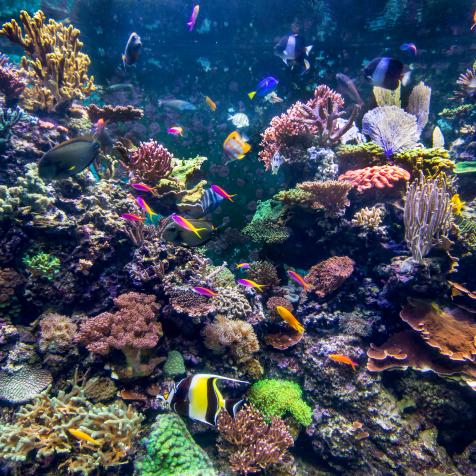
JIM WATSON
Biden Summit Commits Nations to Less Pollution and a Brighter Future
President Biden catapulted the US back into its international climate change commitments on Earth Day 2021 with a wide-ranging summit on industrial emissions, clean technologies, job creation, and innovation. Ambitious action on greenhouse gases was announced, with promises to reduce emissions by 50-52% by 2030.
Biden’s intent was to explicitly assure other countries the US is active in international efforts to combat climate change after his predecessor Trump pulled the nation out of the Paris Agreement to limit global warming in 2017.
The White House said that any new administration less favorable to climate action would not stop targets being met, as industry was already investing in renewable energy and emission-reduction technologies.
"The world as a whole is moving in this direction," said special presidential climate envoy John Kerry. "These companies have made this critical long-term strategic marketing judgment, and that is the way the market is moving. No politician, no matter how demagogic or how potent and capable they are, is going to be able to change what that market is doing."
Leaders in government, business and society from around the world heard how the US administration is taking a ‘whole government’ approach, adding that countries taking decisive action now would reap the benefits in future.
Appearing at the summit to emphasize the direction of travel for the US economy were multi-billion dollar backers of clean technologies, Michael Bloomberg, and Bill Gates.
In 2019, Bloomberg committed $500 million to closing every US coal-fired power plant by 2030. His ‘Beyond Carbon’ initiative includes programs to make the US 100% clean energy-powered, to replace fossil fuel cars and trucks with electric vehicles, and to phase out polluting construction equipment.
US businesses have made big commitments to clean up their act. Car giant General Motors announced its intention to go all-electric in 2017 and plans 20 fully electric models by 2023. US energy companies have gradually shut down coal-fired plants so that renewable energy from wind, solar, geothermal and hydroelectric, overtook coal in 2019.
Meanwhile, Gates has put $2 billion into renewable technology and, along with Bloomberg and other billionaires like Jeff Bezos, formed the Breakthrough Energy Ventures investor group to identify targets. These include companies that produce batteries for energy storage, solar chemical technology to power heavy industry and create hydrogen fuel, and special paint to reflect the sun’s heat from buildings.
Flow batteries offer an alternative to the lithium-ion technology employed by Tesla and other car manufacturers. Their long-term storage potential in the energy grid also makes them ideal for storing power produced by wind and solar energy during their downtime. They are a type of electrochemical cell that converts chemical energy to electricity, and one enterprise, Form Energy, says its aqueous air battery can last for 150 hours, compared to lithium-ion’s four hours in grid storage.
Gates’ solar technology investments include a company that focuses the sun’s heat using large mirror arrays to create extremely high temperatures of 1,000–1,500, Celsius (1,800–2,700 Fahrenheit). Those high temperatures can create clean energy for electricity, power heavy industrial processes like making steel and concrete, or split water to produce hydrogen fuel.
Another concept attracting interest are pure white paints that can decrease the temperature inside buildings by reflecting the sun’s heat, saving energy by making air conditioning unnecessary. These and other technologies will pave the way for big cuts in emissions across industries.
Kerry highlighted the fact that countries representing more than 50% of global GDP had committed to cutting emissions during the summit. But every nation must be involved in the challenge, he said, especially the 20 nations that produce 81% of emissions.
It makes solid economic sense, he added: “If we seize the opportunity to go clean, we’re going to make our economies hum, as President Biden said, and we’re going to reach out for the better future that we want to leave future generations.”

















.jpg.rend.hgtvcom.476.476.suffix/1635892481978.jpeg)
